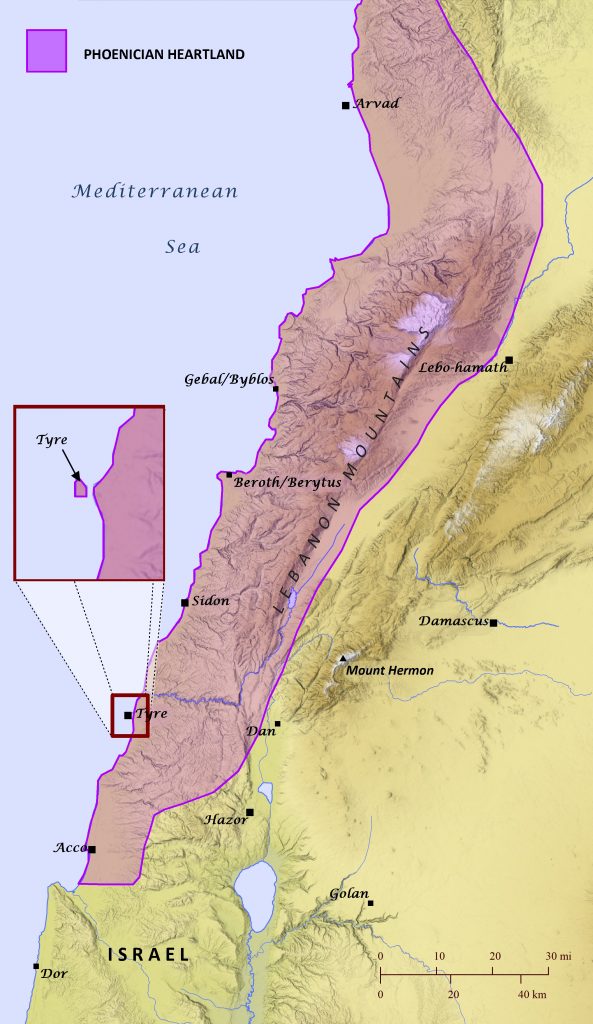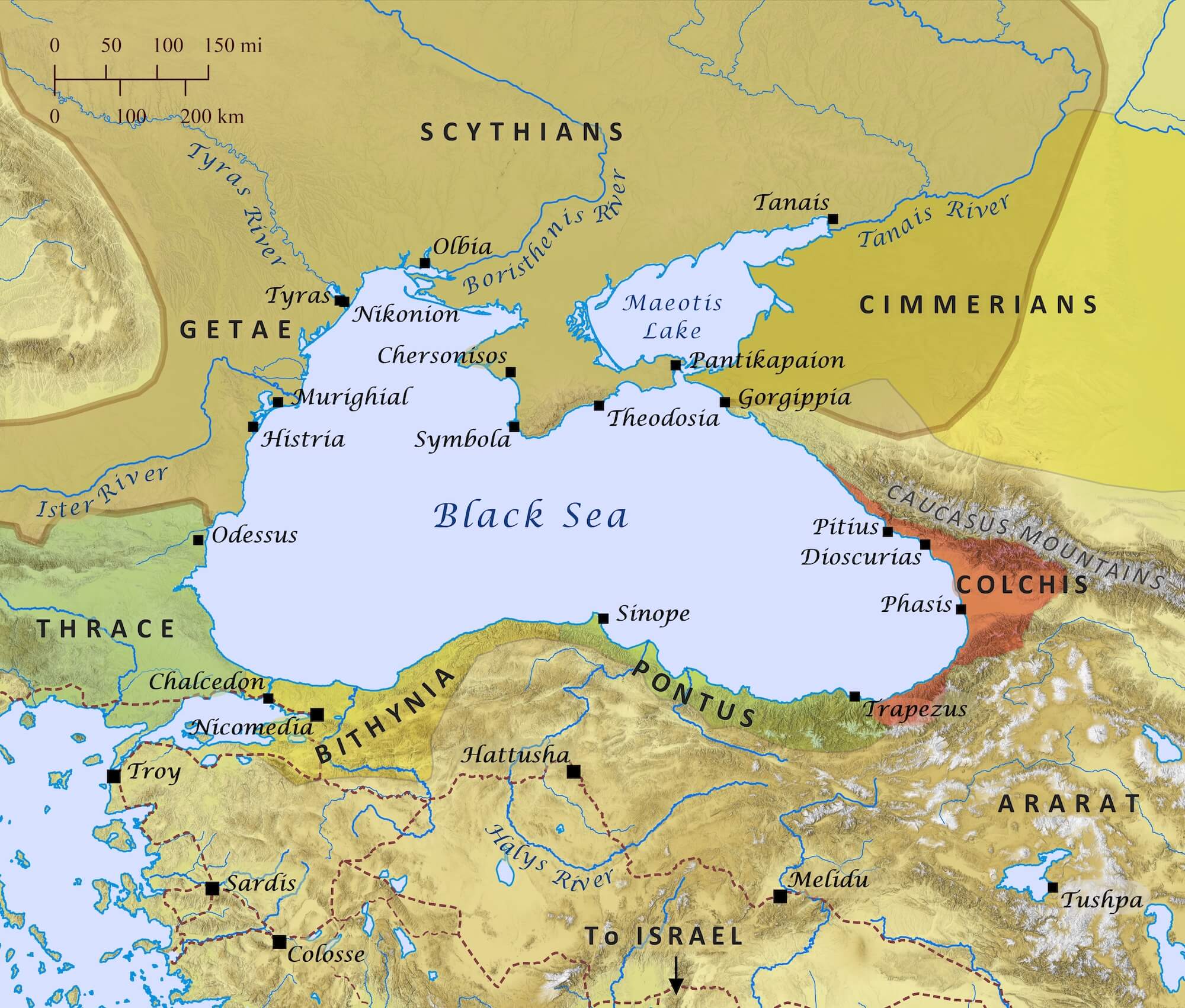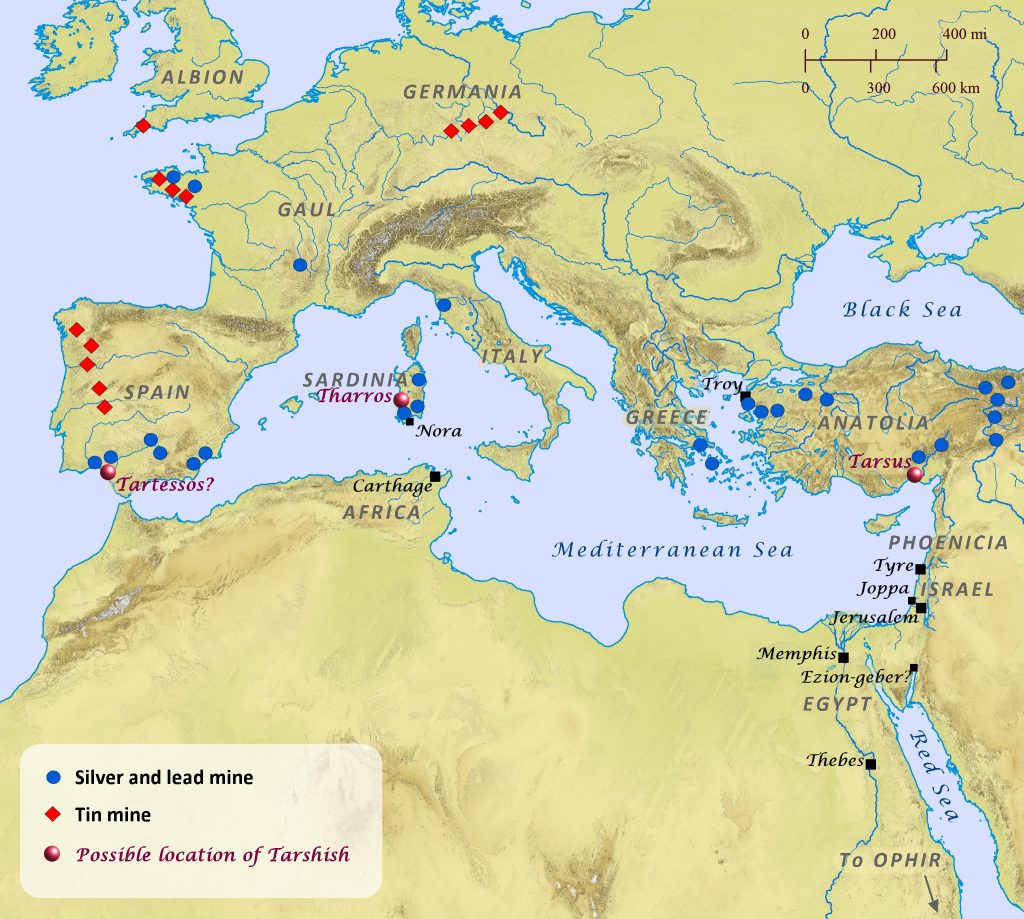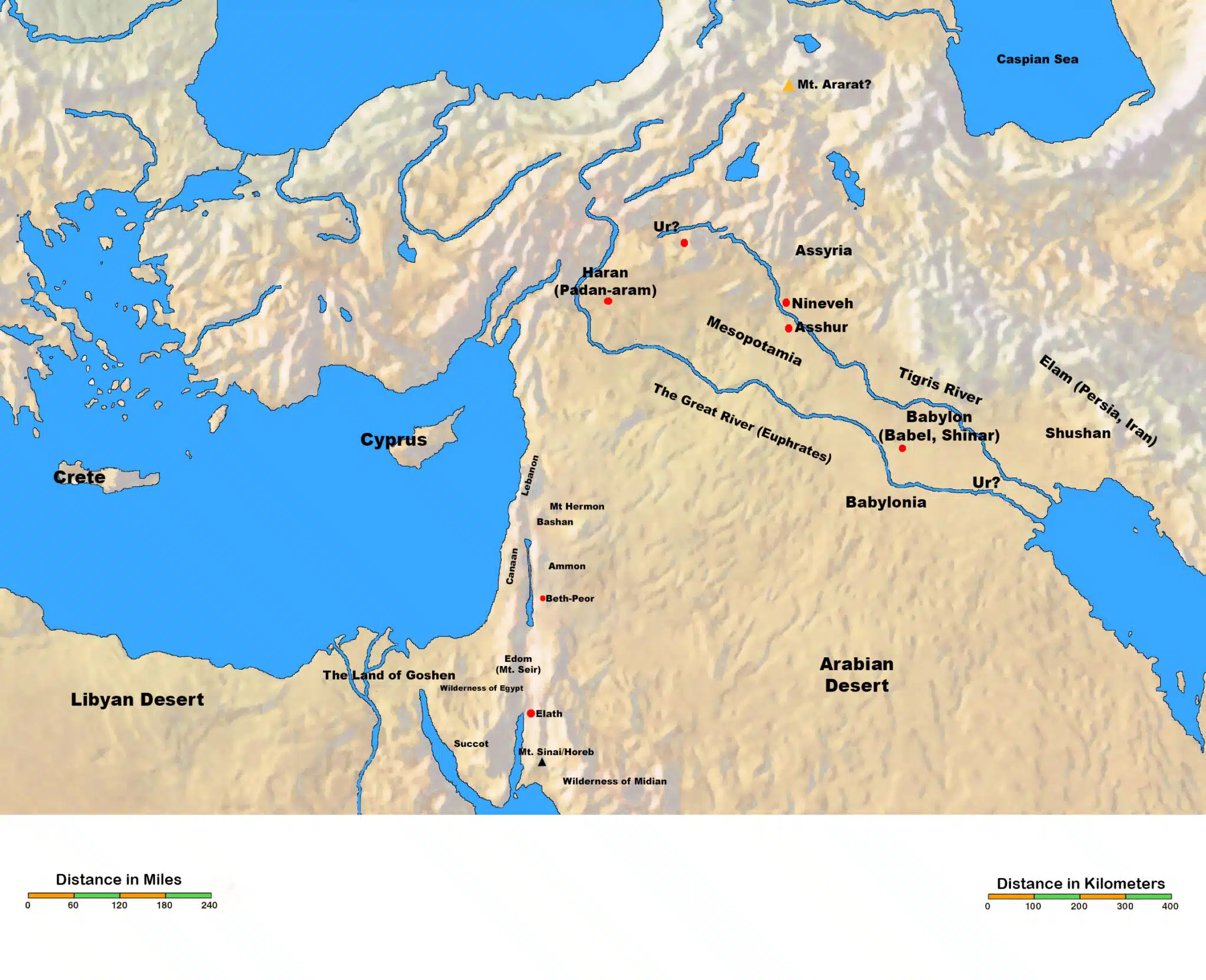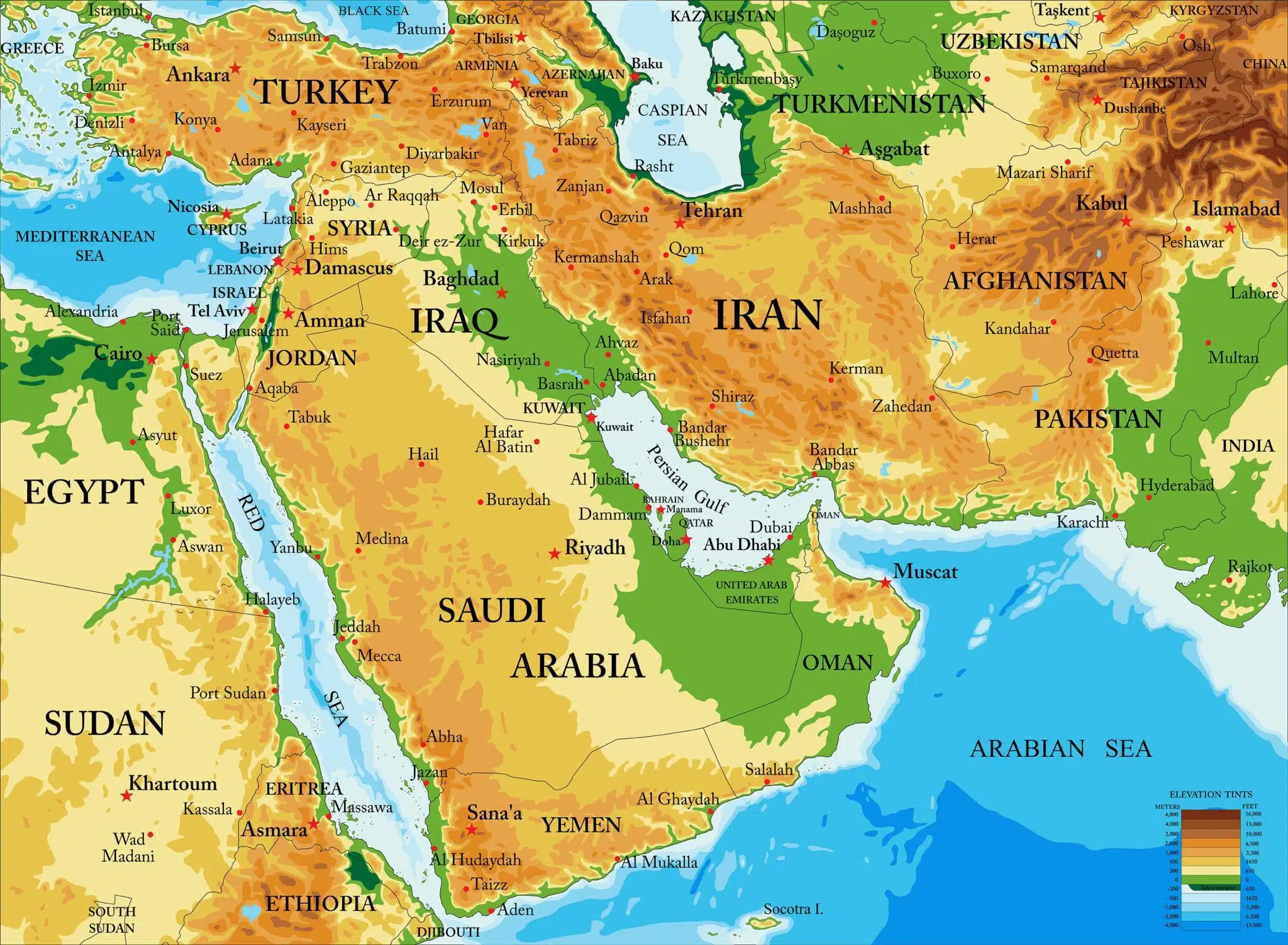After the flood, the world begins to repopulate. Japheth had seven sons. His eldest Gomer had three sons and Javan had four sons. These families moved north, some settling in coastlands.
A new chapter begins in biblical history, the records of the generations of Shem, Ham, and Japheth, the sons of Noah; and sons were born to them after the flood. Noah and his family being the only persons left alive after the Flood, leave the ark at Mount Ararat and began to migrate. From historical events we know that the descendants of Japheth (Noah’s youngest son) moved northward and settled in regions across Eurasia around the Black and Caspian Seas (modern-day Turkey) into Spain. They inhabited the Aegean region and Anatolia or Asia Minor. They became the forefathers of the Europeans, including the Greeks, Romans, Spaniards, and Anglo-Saxons. Other related peoples identified with Japheth were the Persians, Assyrians, Chaldeans, and Macedonians. Interestingly the Japhethites were ones with which Israel had the least contact. They are first in the Table of Nations and presented the most briefly. This passage fulfills Noah’s prediction when he said in Genesis chapter 9, “God shall enlarge Japheth.”
Japheth had seven sons born after the flood: The sons of Japheth were Gomer and Magog and Madai and Javan and Tubal and Meshech and Tiras. Gomer was the first son of Japheth, the sons of Gomer were Ashkenaz and Riphath and Togarmah. Scholars believe hey settled near the Upper Euphrates region north of the Black Sea in Asia Minor near Cappadocia (modern-day eastern Turkey and southern Russia/Ukraine). His peoples became the Cimmerians, a powerful group of Indo-Europeans. In the late second millennium B.C. they were pushed into the Caucasus mountains by invading Scythians. They came from the Caucasus Mountains to invade and terrorize Assyria in Asia Minor during the eighth and seventh centuries B.C. Gomer is described as one of Israel’s northern enemies, along with “Gog” and “Magog,” and is related to the armies of “Beth Togarmah,” the name of Gomer’s son (Ezekiel 38:1–6).
Magog was the second son of Japheth. He was the father of the Scythians in the region of Lydia, north, and northeast of the Black Sea in modern Turkey and an important part of the books of Ezekiel 38-39 and Revelation 20:8. He is also associated with the peoples of Asia Minor, such as Tubal and Meshech. Magog may mean southern Russia or Asia. He and his descendants became known as fierce warriors. It is noted that Josephus identified Magog with the Scythians. Magog could mean “the land of Gog.” But scholars vary with the translation as a place and not a person.
Madai was the third son of Japheth. His descendants became the Medes and Kurds in the mountainous country east of Mesopotamia, west of the Caspian Sea, and south of the Zagros Mountains and northeast of the Tigris River, now in modern northwestern Iran. Madai includes the Persians too and is frequently mentioned by the Assyrian kings after the ninth century B.C. (Isaiah 13:17, 21:2; Jeremiah 51:11,28; Daniel 5:28, 6:16; Ezra 6:2). Madai is mentioned in Assyrian texts in 836 B.C. during the reign of Shalmaneser III.
Javan was the fourth son of Japheth. The sons of Javan were Elishah and Tarshish, Kittim and Dodanim. His ancestors colonized the west coast of Asia Minor and southern Greece. They became the Greeks and those living on Cyprus (Daniel 8:21,10:20). The Javanites were enemies of the Israelites even as far back as the third millennium B.C. (Zechariah 9:13; Joel 3:6; Isaiah 66:19; Ezekiel 27:13). They were traders of slaves and bronze vessels.
Tubal was the fifth son of Japheth. They settled in central and eastern Asia Minor in modern day Turkey. They are also linked to the British Isles. The people of Tubal traded in slaves and bronze artifacts (Ezekiel 27:13; Isaiah 66:19). They were the subject of condemnation for their idolatry and evil ways (Ezekiel 32:26, 38:2, 39:1).
Meshech (Heb. tall) was the sixth son of Japheth. They settled in the coastal regions of Anatolia, Asia Minor. These peoples were regarded as the epitome of the forces of evil against God’s people in Israel (Ezekiel 38:2-3, 39:1; Psalm 120:5-7). Their capital was at Mazaca (modern Kayseri). The Persian empire incorporated the remains of the Meshech and Tubal during the nineteenth century in northeast Anatolia. Incidentally, according to Herodotus, in the Greek sources, they are called the Moschoi and Tibarenoi.
Tiras was the seventh son of Japheth. His family became the Etruscans of Italy and also lived near the Aegean Sea. They competed with the Romans for control of the central part of Italy. They may have been related to ancient Thrace or to Turuša, one of the sea peoples who attacked Egypt in the late thirteenth century. It is often surmised that they were Aegean pirates, the Tyrsenians mentioned by Herodotus, and the Etruscans who were well established in Italy in the eighth century.
The sons of Gomer were:
Ashkenaz was a grandson of Japheth and a son of Gomer. They became an Indo-European nomadic people. They were experts in cavalry and archery. They lived between the Black and Caspian seas. The Greeks called them the Scythians and they are mentioned in Assyrian texts. The kingdom of Ashkenaz was among those summoned by the prophet to attack Babylon in Jeremiah 51:27. The Scythians came from southern Russia, driving the Cimmerians out ahead of them, and may have eventually settled in Media in the seventh century. The Scythians displaced the Cimmerians from their homeland. Since the Middle Ages, “Ashkenaz” has been used by Jews as a designation for Germany.
Riphath or Diphath was a son of Gomer and had two brothers (1 Chronicles 1:6). Josephus identifies Riphath with the Paphlagonians, who lived between the Black Sea and Bithynia. This would fit well within the table.
Togarmah was a son of Gomer and therefore a direct descendant of Noah. Beth-Togarmah was in Asia Minor, modern Gurun (Ezekiel 27:14, 38:6). Assyrian and Hittite texts mention Tegarama, a city in nineteenth-century B.C., which lay north of Carchemish and Haran along an important trade route that led from Assyria to Cappadocia in Asia Minor. It may be identified with an area between the upper Halys and the Euphrates.
Javan and his sons were Mediterranean people. The sons of Javan lived west beyond the mainland of Asia Minor. The four sons of Javan were:
Elishah was a son of Javan. His peoples are identified with the Greeks and the people of southern Italy or Cyprus. Ezekiel 27:7 mentions “the coasts of Elishah” as the place where highly prized purple dyes were obtained from the people of Tyre in Phoenicia. Elishah probably can be identified with Alašiya of Akkadian, Hittite, and Ugaritic inscriptions. Alašiya is usually considered either the island of Cyprus or at least part of it. A Mycenaean (Greek) colony was established on Cyprus in the mid-second millennium B.C. Some scholars view Elishah as a city in the southern foothills of Crete, whose ruins are to be found at Haghio Kyrko.
Tarshish was associated with the city of Tartessus in the south of Spain near Gibraltar some 2000 miles West of Palestine in the Mediterranean Sea (Jonah 1:3,4:2). He was the second son of Javan. His descendants became a maritime people linked with Mediterranean trading and shipping of gold, silver, ivory, iron, tin, and lead (1 Kings 10:22; Psalm 48:7; Ezekiel 38:13). The ships of Tarshish operated in both the Red Sea at Ezion Geber and the Mediterranean (2 Chronicles 20:36-37; Ezekiel 27:35). Esarhaddon claimed to have subdued “all the kings who dwell in the midst of the sea, from Cyprus and Yaman as far as Tarshish.” Other possible sites for Tarshish are Tarsus in southeast Asia Minor, Tartessus in southwest Spain, and Tharros in Sardinia of Asia Minor (all west of Israel). Another suggestion is that Tarshish could be Carthage, the famous Phoenician colony in North Africa. The location is obviously a scholarly debate.
Kittim was a son of Jovan. He settled in present-day Larnaca on the southeast coast of Cyprus, a seaport, and had encounters with Asshur and Eber. They became idol worshippers (Numbers 24:24; Isaiah 23:1; Jeremiah 2:10-11; Ezekiel 27:6; Daniel 11:30). The island was taken over first by the Minoans, then the Mycenaeans. Later in the ninth century B.C. the Phoenicians colonized it and then the Greeks in the twelfth century.
Dodanim or Rodanim was a son of Javan. His descendants became dwellers on the Aegean islands in the vicinity of the Isle of Rhodes.
Japheth had fourteen descendants, seven sons, and seven grandsons. From these the coastlands of the nations were separated into their lands, everyone according to his language, according to their families, into their nations.
Biblical Text
1 Now these are the records of the generations of Shem, Ham, and Japheth, the sons of Noah; and sons were born to them after the flood. 2 The sons of Japheth were Gomer and Magog and Madai and Javan and Tubal and Meshech and Tiras. 3 The sons of Gomer were Ashkenaz and Riphath and Togarmah. 4 The sons of Javan were Elishah and Tarshish, Kittim and Dodanim. 5 From these the coastlands of the nations were separated into their lands, everyone according to his language, according to their families, into their nations.
Check out our other commentaries:
-
Hebrews 9:11-12 meaning
Christ’s priestly ministry is better than that of the Old Covenant. He entered the greater tabernacle, through His own blood, and He did it once...... -
Colossians 3:1-4 meaning
Paul reminds the Colossians of their standing with Christ, over and against the mindset of the flesh....... -
Matthew 11:25-27 meaning
Jesus prays to His Father in Heaven, revealing His relationship to God as His Son. And as the Son’s identity is revealed by the Father...... -
Deuteronomy 4:15-20 meaning
Moses warns the Israelites against making any idols as a way of worshipping Yahweh. Doing so would reduce the creator (God) to the level of...... -
Exodus 28:31-35 meaning
The LORD describes how the High Priest’s robe was to be made.......



